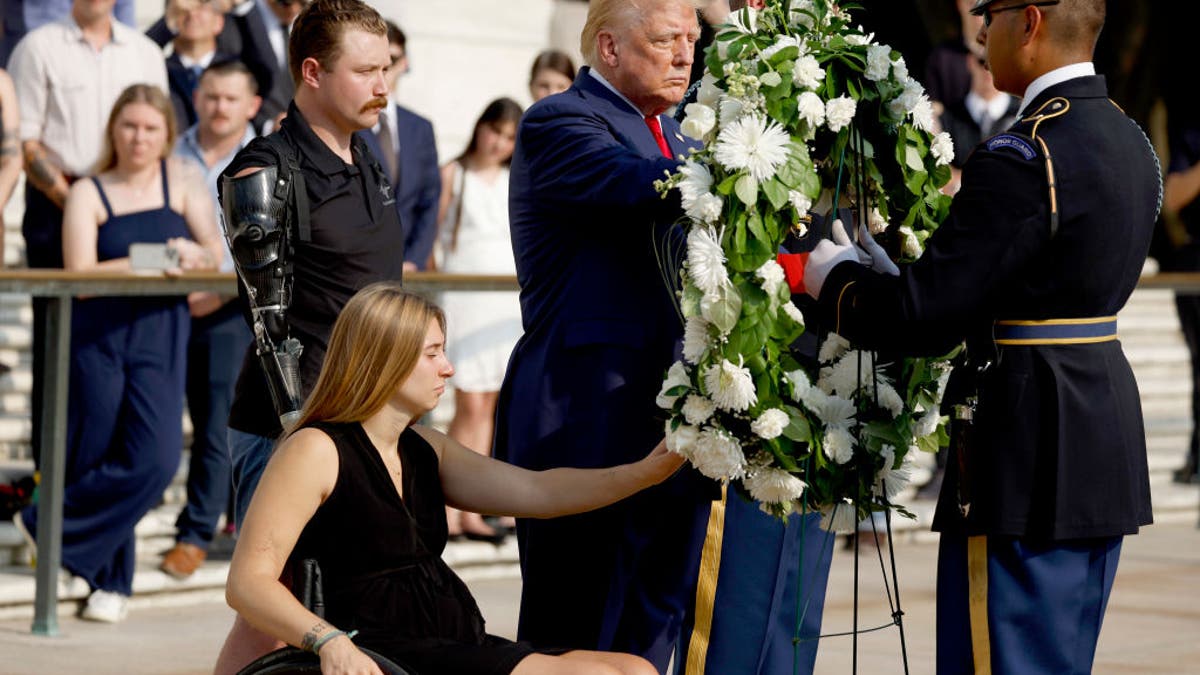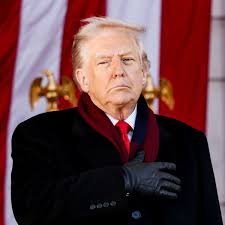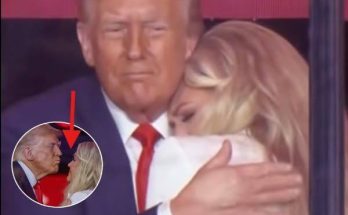Arlington National Cemetery is one of the few places in America where politics is meant to fall silent. It is a sanctuary of sacrifice — a place where uniforms, flags, and folded hands speak louder than any speech. But this year, during Trump’s wreath-laying ceremony at the Tomb of the Unknown Soldier, something happened that unsettled many watchers across the country.
Not a speech.
Not a gesture.
But a scarf — bright red, impossible to miss, and worn by only one man.
1. The Red Scarf That Stood Out in a Sea of Black and White
On a morning meant for humility, Trump arrived wearing a red scarf that clashed sharply with the formal black-and-white attire of military personnel.
To many older Americans who grew up with deep traditions of military decorum, the sight felt jarring. Arlington ceremonies are designed to fade the individual into the background — to put the fallen first, not fashion.
But the bold color drew eyes away from the wreath, away from the tomb, and toward him.
For veterans watching from home, it felt disrespectful.
For families of the fallen, it felt unnecessary.
And for many who served, it felt like a moment hijacked by personal image rather than solemn remembrance.
2. Trump’s Suggestion to Rename Veterans Day — and the Anger It Sparked

The scarf alone may have passed as questionable judgment.
But what came next reopened wounds for many in the military community.
Trump suggested renaming Veterans Day to “Victory Day.”
The reaction was immediate — and fierce.
Senator Richard Blumenthal spoke out, citing the words of veterans who reached out to him in disbelief.
Their message was simple:
Veterans Day is about sacrifice, not celebration.
About service, not slogans.
About the fallen, not victory parades.
By shifting the focus to “victory,” the very meaning of the day becomes distorted — celebrating the outcome rather than honoring the cost.
For those who buried comrades, the idea felt painful.
For those who lost family members, it felt dismissive.
For those who served quietly, without applause, it felt like a misunderstanding of everything the uniform stands for.
3. Blumenthal’s Sharp Reminder: “He Never Served.”

But the deepest wound came from a truth many Americans already knew:
Trump received four draft physicals and avoided military service on medical grounds.
Blumenthal — himself a veteran advocate — didn’t hold back.
He pointed out that Trump, having never served, may not fully understand the reverence, discipline, and humility that Arlington demands.
Veterans echoed the sentiment:
-
You don’t wear bright colors at a tomb.
-
You don’t rebrand a sacred day.
-
You don’t turn remembrance into personal symbolism.
-
You don’t speak of victory before honoring the dead.
For many older Americans, the gesture felt like a painful reminder of the growing distance between public ceremony and genuine respect.
A Moment That Should Have United the Nation Instead Divided It
Arlington is the final resting place for those who died nameless, without rank, without recognition. The Tomb of the Unknown Soldier honors those who did not return home — men and women whose identities were lost but whose sacrifice was not.
It is a place where silence is sacred.
Yet this year, silence could not cover the murmurs of disappointment.
Whether one supports Trump or not, the ceremony left behind an uncomfortable question:
When honoring the fallen, should personal branding ever come before reverence?
For many veterans and families, the answer was painfully clear.
And the red scarf — bright, striking, unforgettable — will linger in their memory long after the ceremony has ended.

 Chicago’s Dilemma
Chicago’s Dilemma

